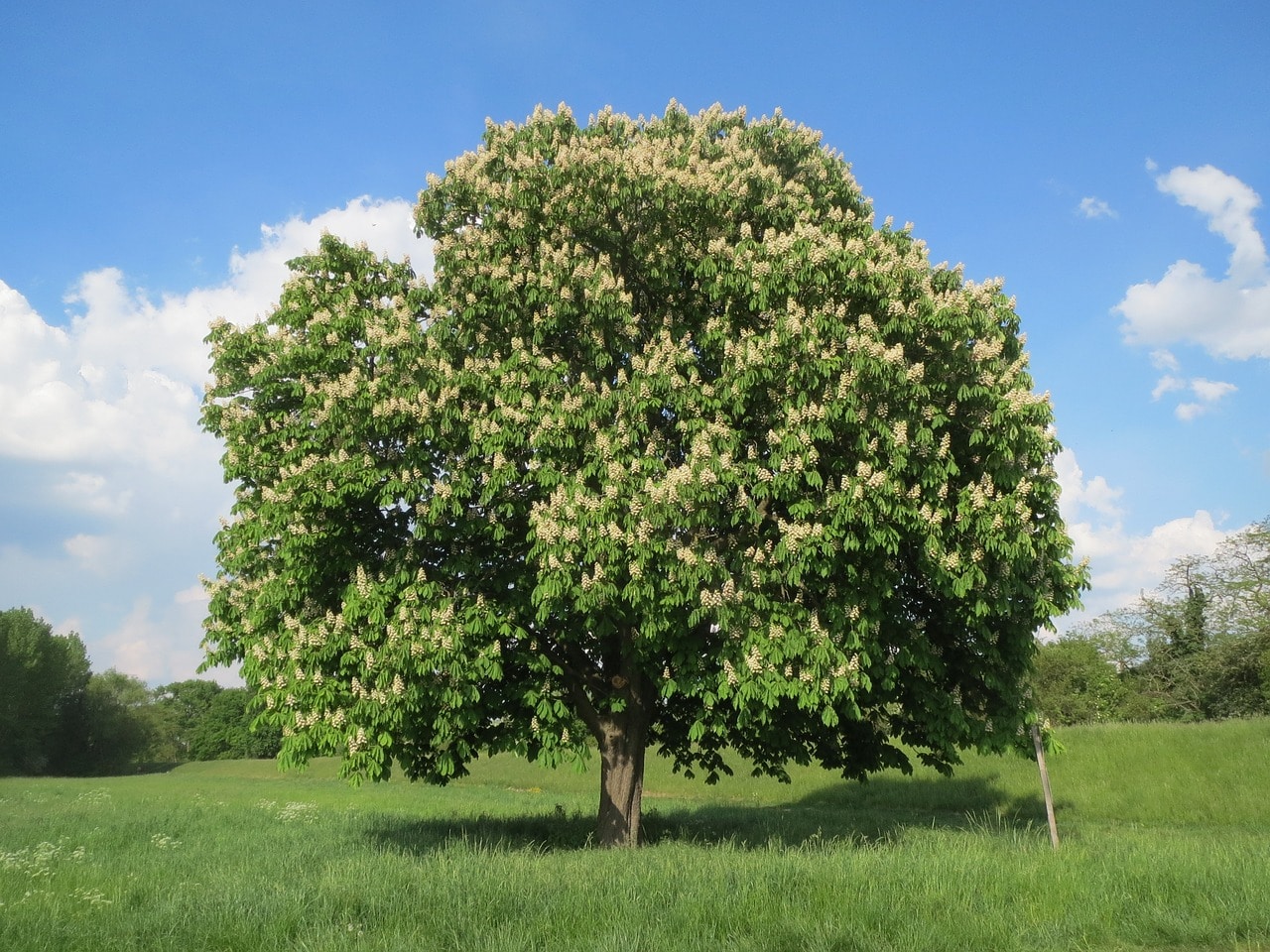
The hardwoods are those plants that usually provide a very pleasant shade. They generally need a lot of space to develop, as their cups are usually wide. But even so, it is always interesting to have some in the garden, since thanks to them it will not be difficult for us to enjoy, for example, a picnic with friends, or reading a good book.
When choosing the species you have to make sure that they will be really well in the area where you want to put them, since that is the only way to avoid problems in the short and medium term. Let's get to know them in detail.
What is a leafy plant?
Leafy plants are those that have many leaves, flat and often wide. They are trees and shrubs that can be evergreen or evergreen, deciduous, sub-evergreen, or sub-deciduous. In order to keep their leaves alive for as long as necessary, they live in slightly warmer and more humid environments than conifers.
In fact, if we compare the leaves of a maple for example with that of a pine, we will immediately realize its fragility, and if we also had the opportunity to put a little ice on it - without pulling it from the tree - we would see that it would spoil. very quickly by not being prepared to withstand these conditions. The leaves of pines, and conifers in general, are able to withstand ice and snow for days and weeks at a time without too much trouble.
Therefore, those species that are leafy are more typical of temperate, tropical and subtropical regions. When many live together in the same area, they form forests called broadleaf forests, hardwood forests or broadleaf forests.
How many types of broadleaf forests are there?
Depending on the climate, several types of hardwood forests are distinguished:
Tropical and subtropical forests
They are those located on (or near) the equator line, in the intertropical zone. The average annual temperature is around 27ºC in the case of tropical forests, and 17-24ºC in subtropics.
Rainforest or humid forest
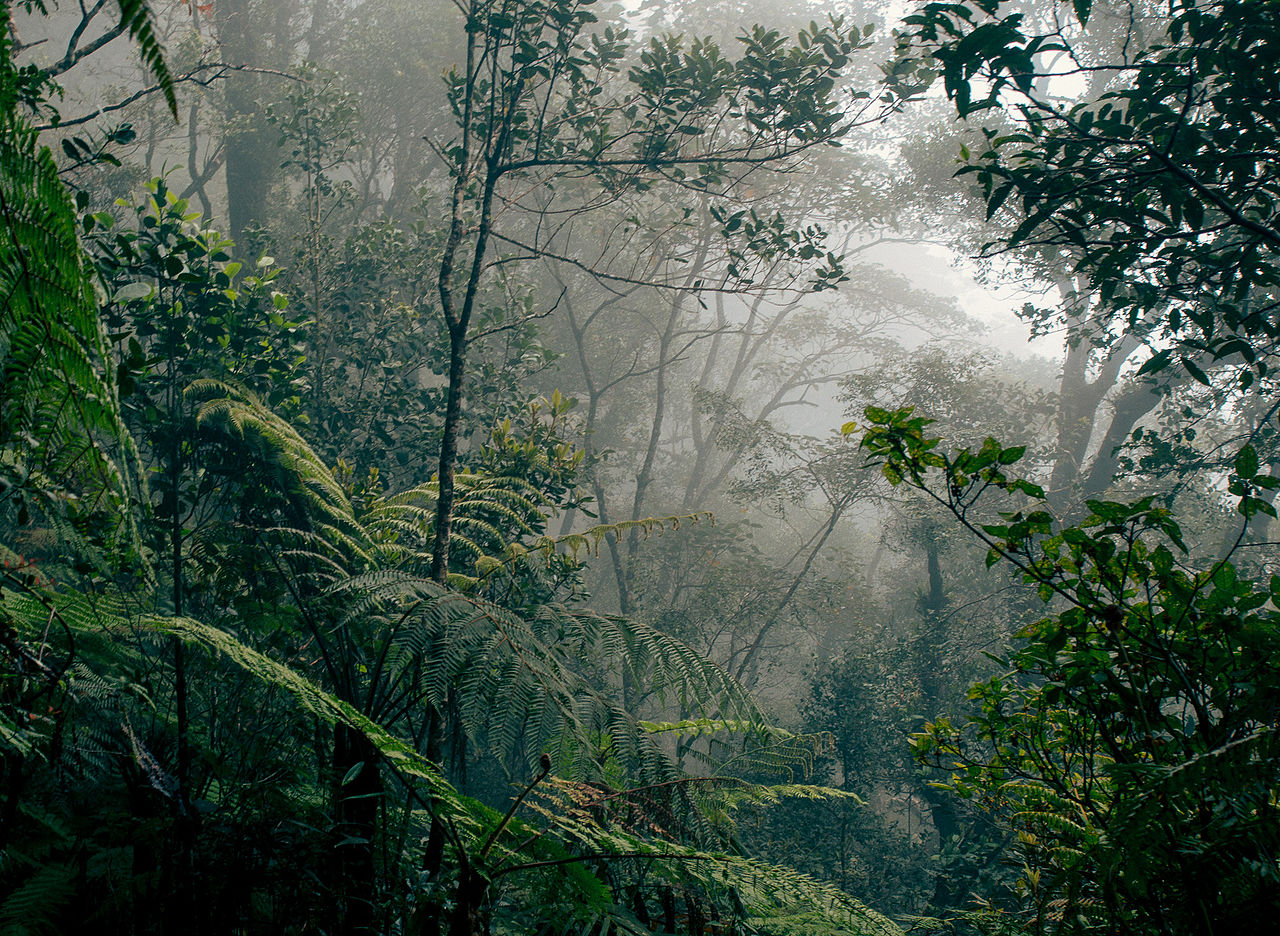
Image - Wikimedia / Dukeabruzzi
It is also known as rainforest or tropical and subtropical hardwood forest. It is a biome that groups together forest ecosystems with an average annual temperature of between 17 and 24ºC located mainly in the intertropical zone. It rains regularly, so humidity is assured.
The trees have large leaves, characterized by having 'channels' of water outlet at the tip; however, the bark of its trunk is generally very thin, smooth and sometimes thorny. Its fruits are large, fleshy, and very tasty for animals.
Nimbosilva or montane forest
It is also known as cloud forest or mossy forest, and it is grouped within the rain forest. In this places, there is a persistent dew that reduces direct sunlight reaching the ground, and therefore, evapotranspiration (loss of moisture due to plant transpiration) is also affected.
Thus, only those that are capable of living in these environments, such as ferns or mosses, live wonderfully in montane forests. Of course, there are also trees, like the Quercus costaricensis o Persecute.
Hiemisilva or tropical dry forest
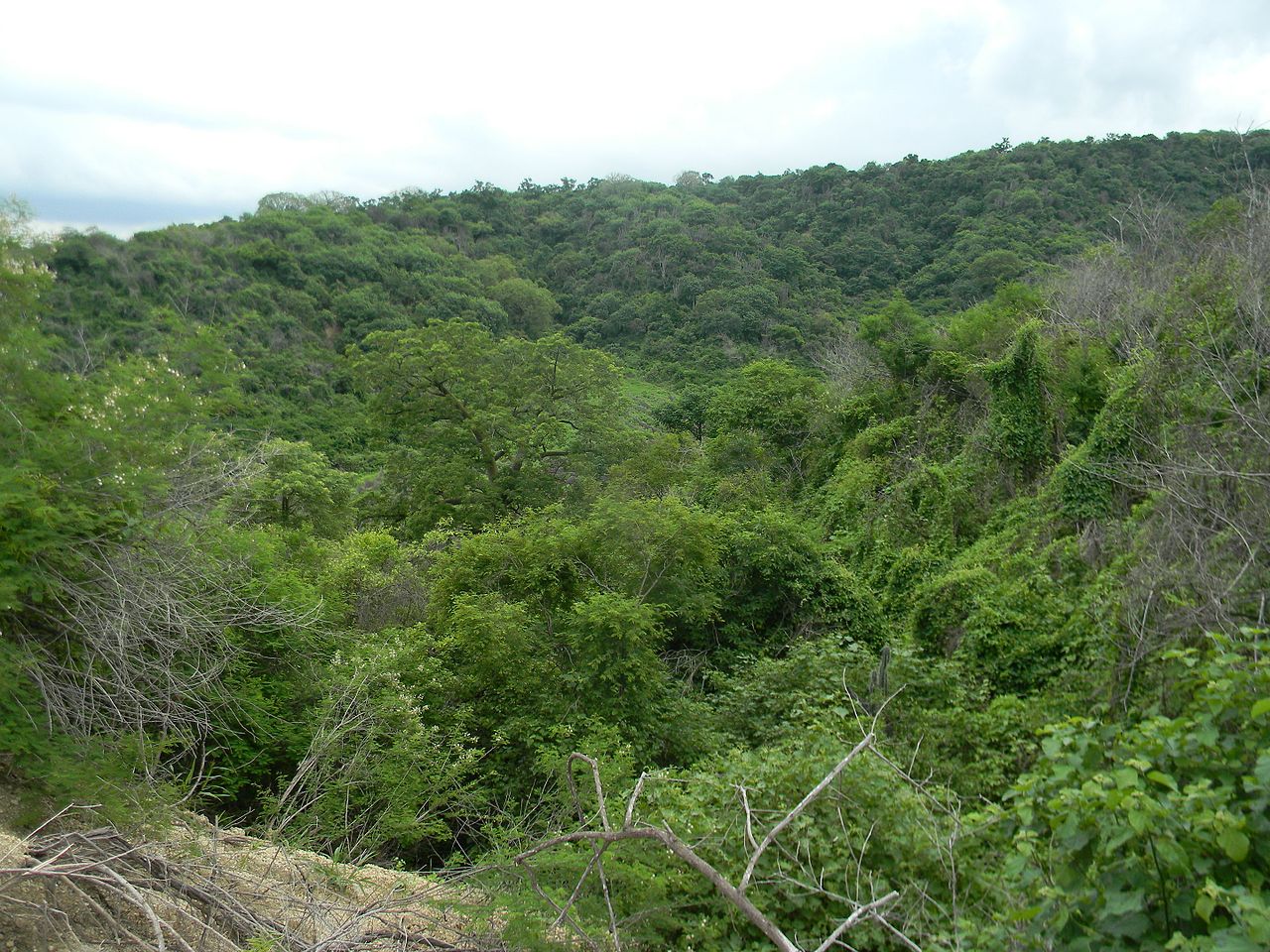
Image - Wikimedia / Luis albert255
It is also known as dry forest or deciduous forest, and it is located between the rain forests and arid ecosystems of both hemispheres, between 10 and 20º latitude. The climate is warm, with a temperature between 25 and 30ºC, and rains between 300 and 1500mm with a marked dry season. which can last from four to nine months.
The trees that live here have large leaves with lovely flowers, such as the bauhinia variegata, but during the dry season they lose their foliage in order to conserve water and stay alive.
Temperate forests
It is a biome that groups forests that live in moderate climates, with rainfall around 600 and 1500 mm on average, and average annual temperatures between 12-16ºC, there may be very cold winters.
Deciduous forest
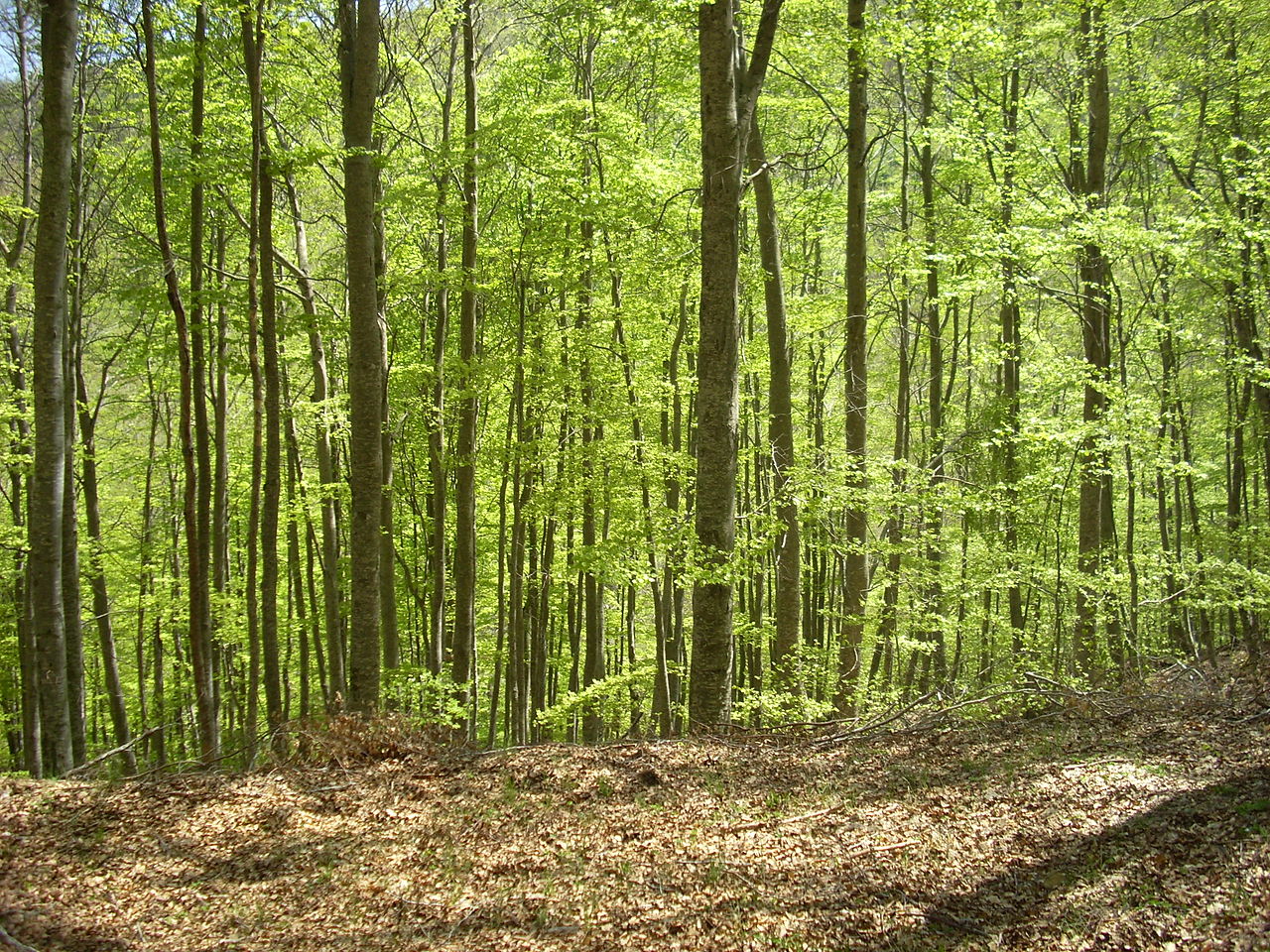
Hayedo in Soria (Spain). Image - Wikimedia / David Abián
It is a type of temperate forest that is found in eastern North America, much of Europe, part of Asia including some parts of Japan, New Zealand and south-western South America. Annual rainfall is greater than 800mm.
Here, the trees lose their leaves in autumn-winter, and sprout in spring, such as beech trees (Fagus) or maples (Acer).
Laurel forest
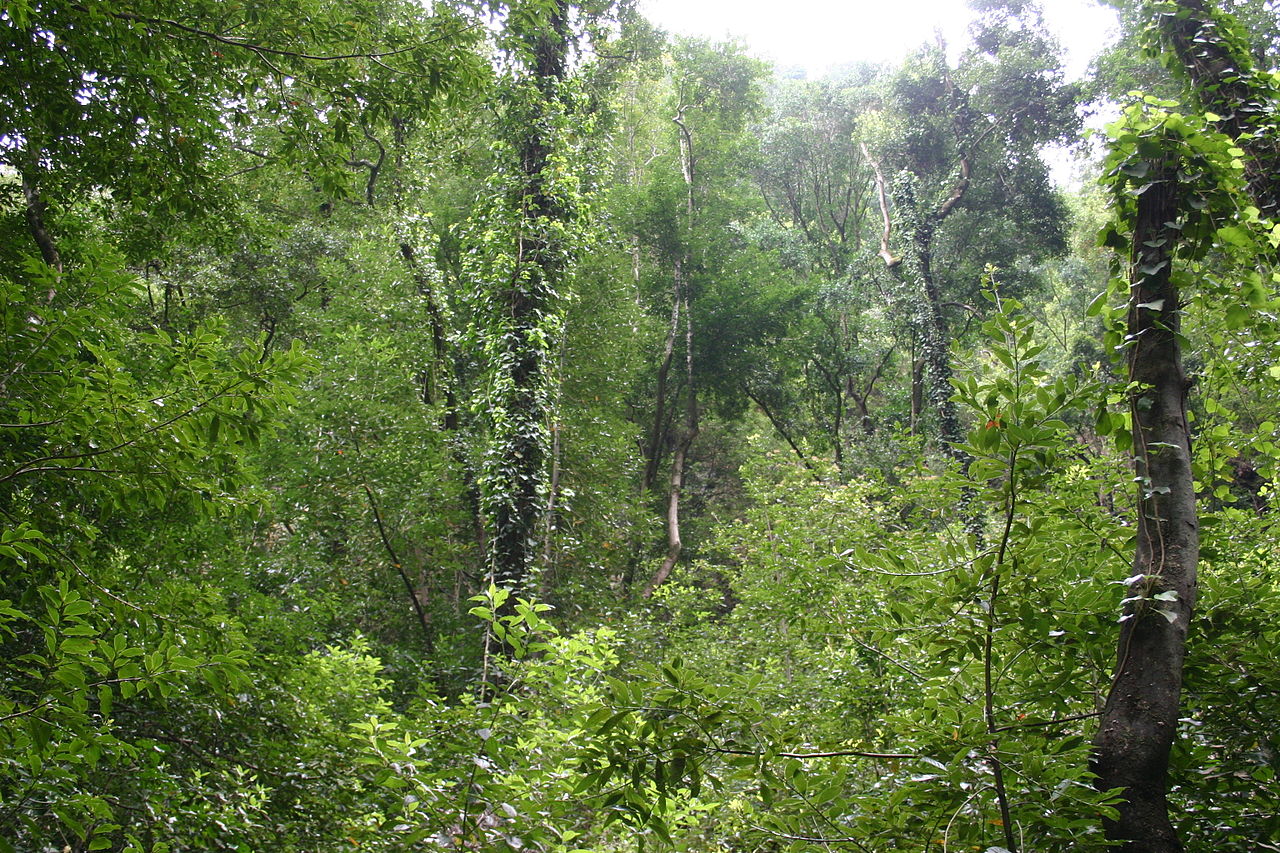
Image - Wikimedia / Gruban at Flickr
Also called temperate forest, since because rainfall is greater than 1000mm and temperatures are moderate, a great variety of plants grow in it, as in Macaronesia for example.
Those plants that live in this forest are characterized by being evergreen, such as laurel (Laura).
Mixed forest
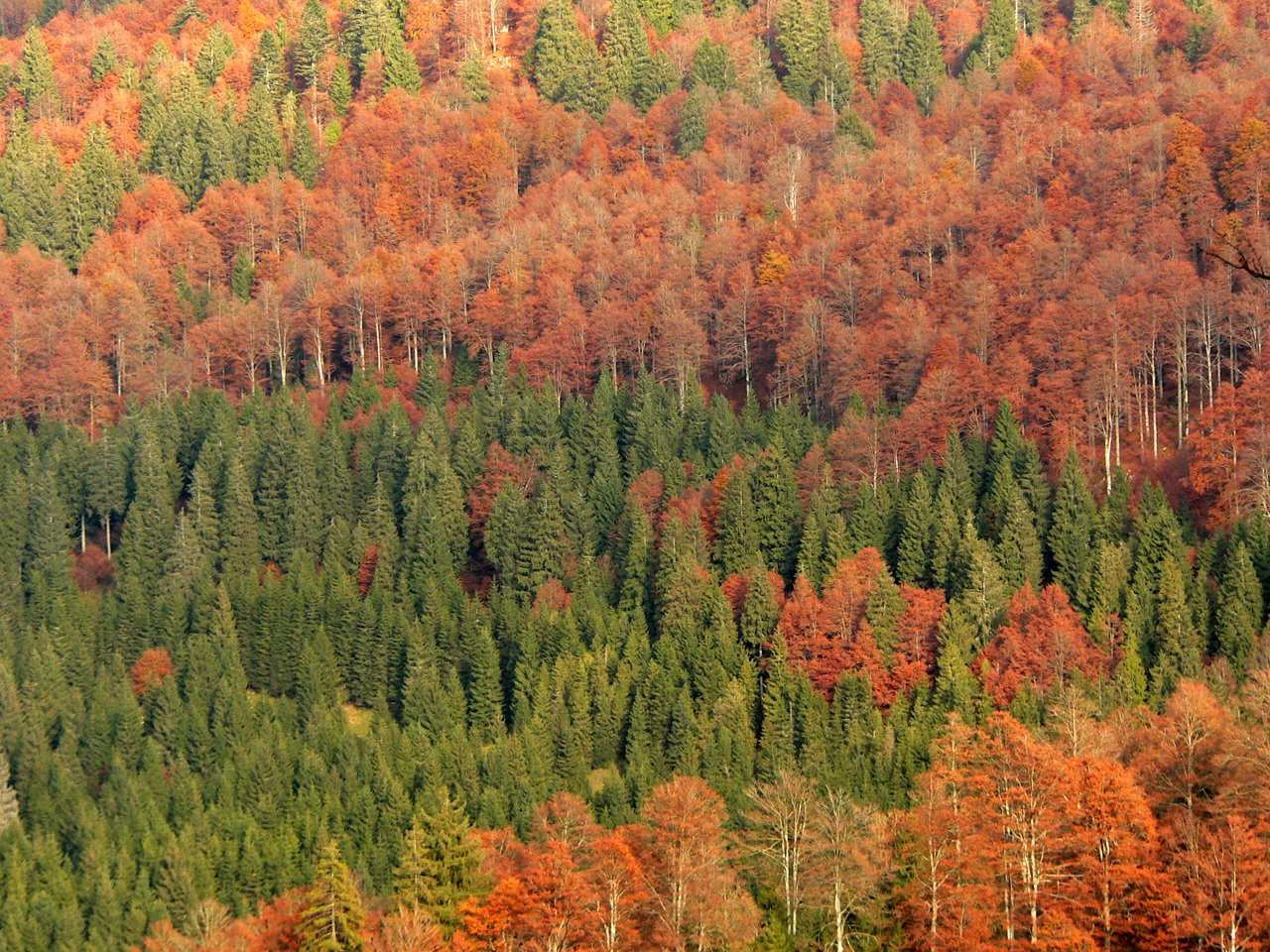
Image - Wikimedia / Umberto Salvagnin from Italy
That forest is known as mixed forest in which angiosperm and coniferous plants live. For example, one of the best known - and, incidentally, one of those most in danger of disappearing mainly due to deforestation - is the Atlantic mixed forest, located on the Atlantic coast of Western Europe. In it live, among others, pines (Pinus) with oaks (Quercus).
Mediterranean forest
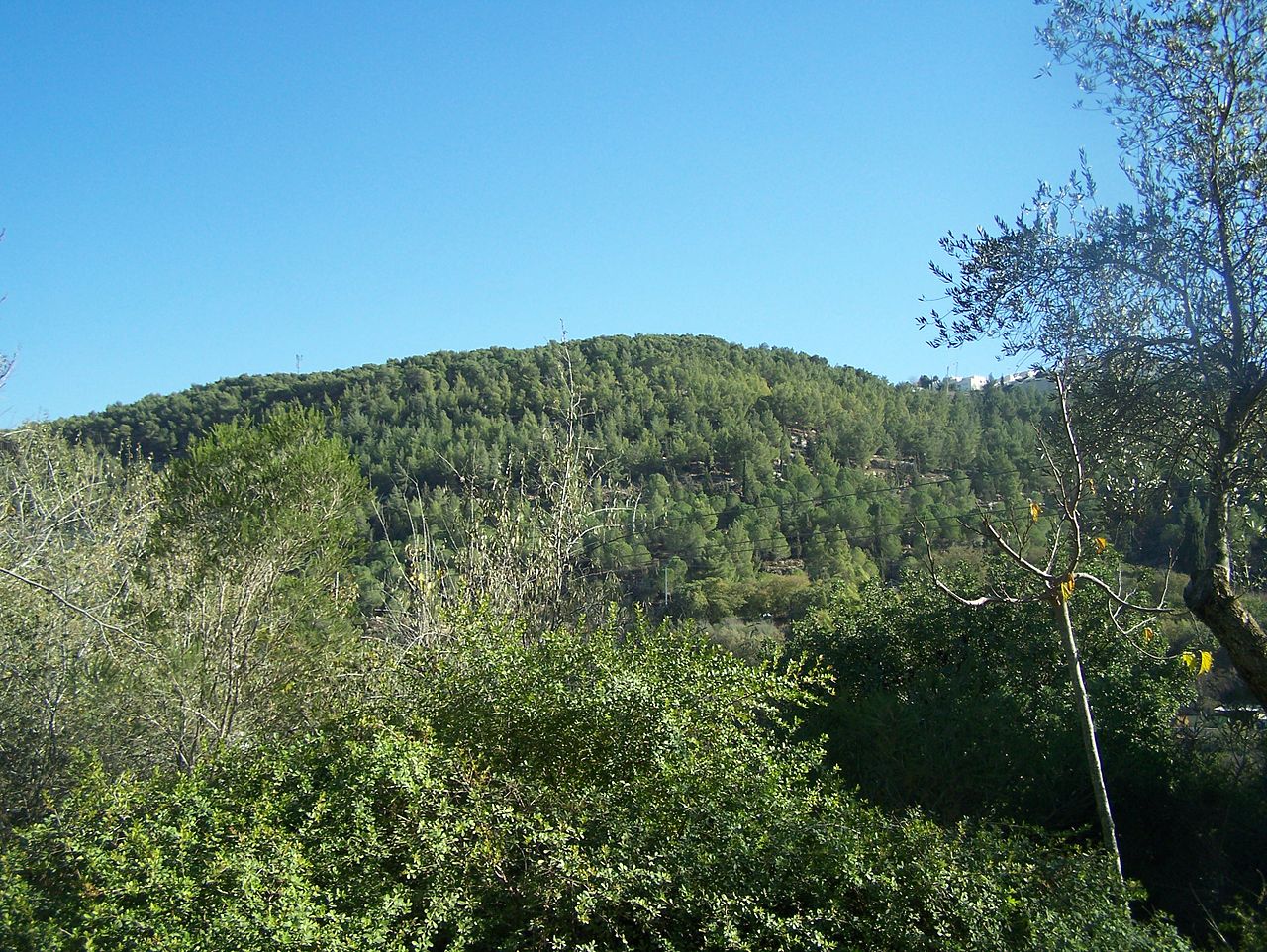
Image - Wikimedia / מתניה
The plants of the Mediterranean forest have evolved to live in areas where annual rainfall is between 300 and 700mm, and where there is also a marked dry season that coincides with summer. We will find this biome in, as its name suggests, the Mediterranean region, but also in California, central Chile, southern Australia and South Africa.
Its leaves are evergreen, leathery, and do not usually exceed 20 meters in height. They can also have thorns, either on their leaves, or on the branches. For example, here we will see mastic (pistachio), wings (Rhamnus alaternus) or Aleppo pine ( propagating through a pine forest (Pinus halepensis).).
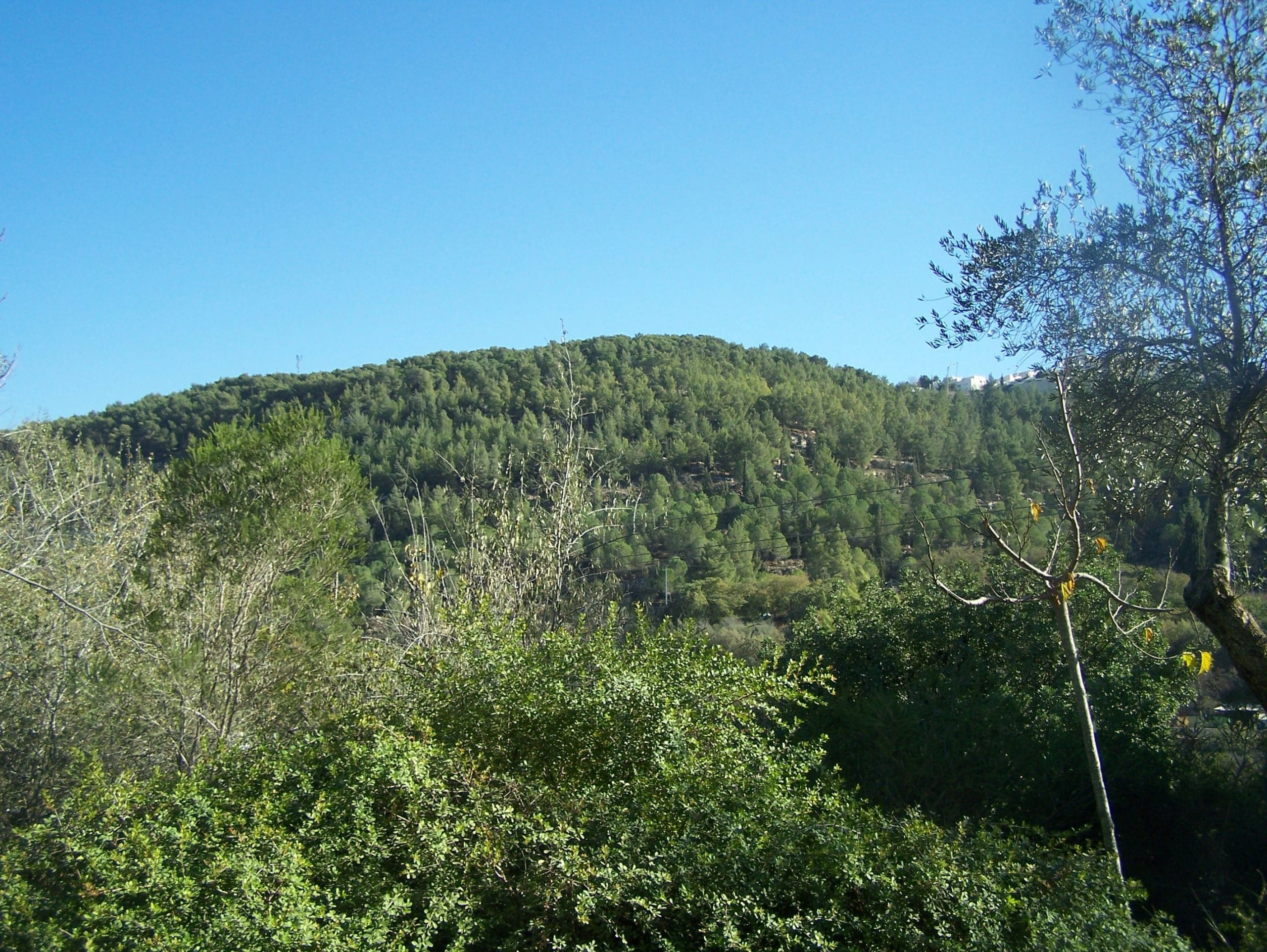
Leafy tree types
Now that we know the hardwoods better, it is time to find out which trees are like that. To make it easier for you to choose one for your garden, we have classified them a bit:
Leafy, slow-growing trees
They are that grow about 50 centimeters a year or less, like these:
Minor maple (Acer monspessulanum)
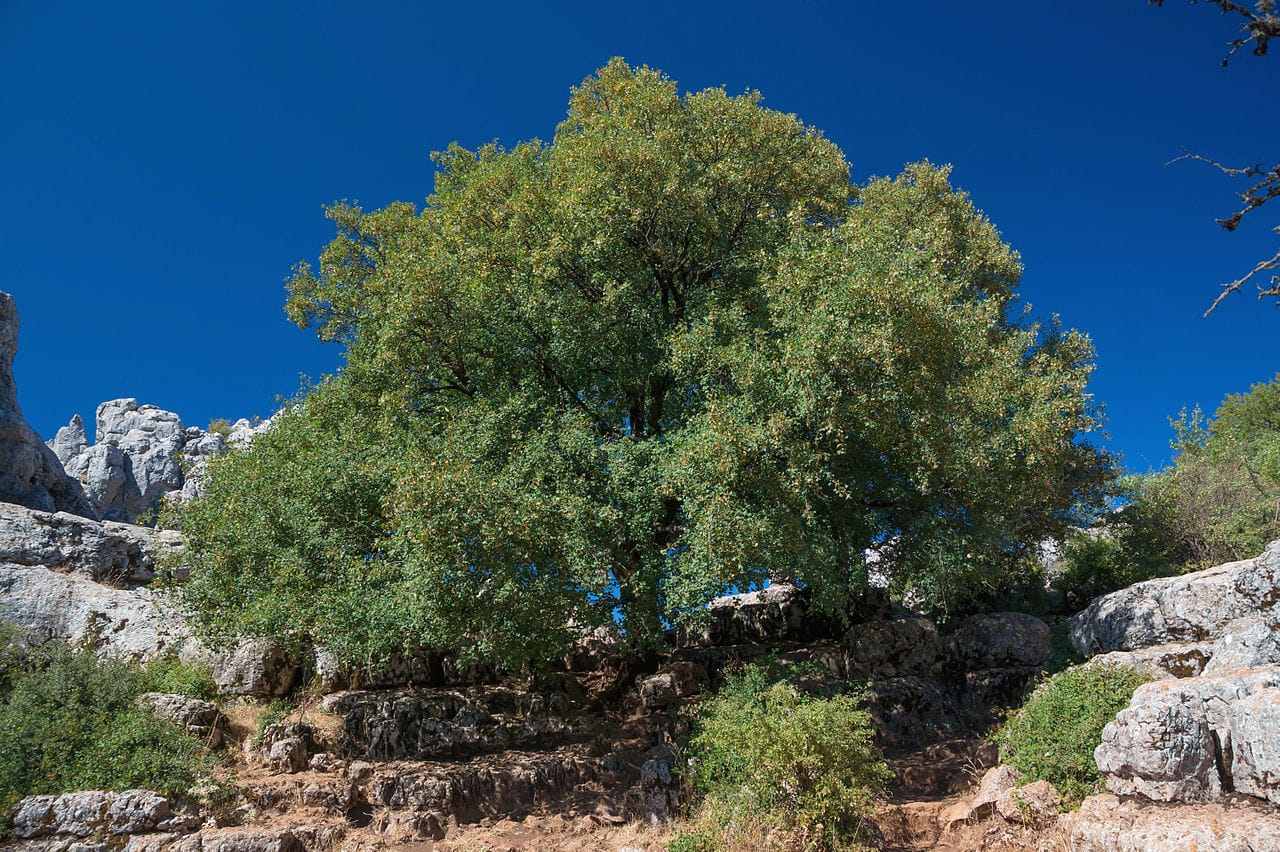
Image - Wikimedia / Jebulon
El minor maple is a deciduous tree or sapling native to Europe and southern Asia that reaches a height of 4 to 7 meters. Its leaves are trilobed, green, although they turn reddish in autumn before falling. It blooms in spring, but they are flowers that have no decorative value.
It grows on siliceous and limestone soils, provided it is watered moderately. Tolerant of shade. Resists up to -18ºC.
sweetgum (Liquidambar styraciflua)
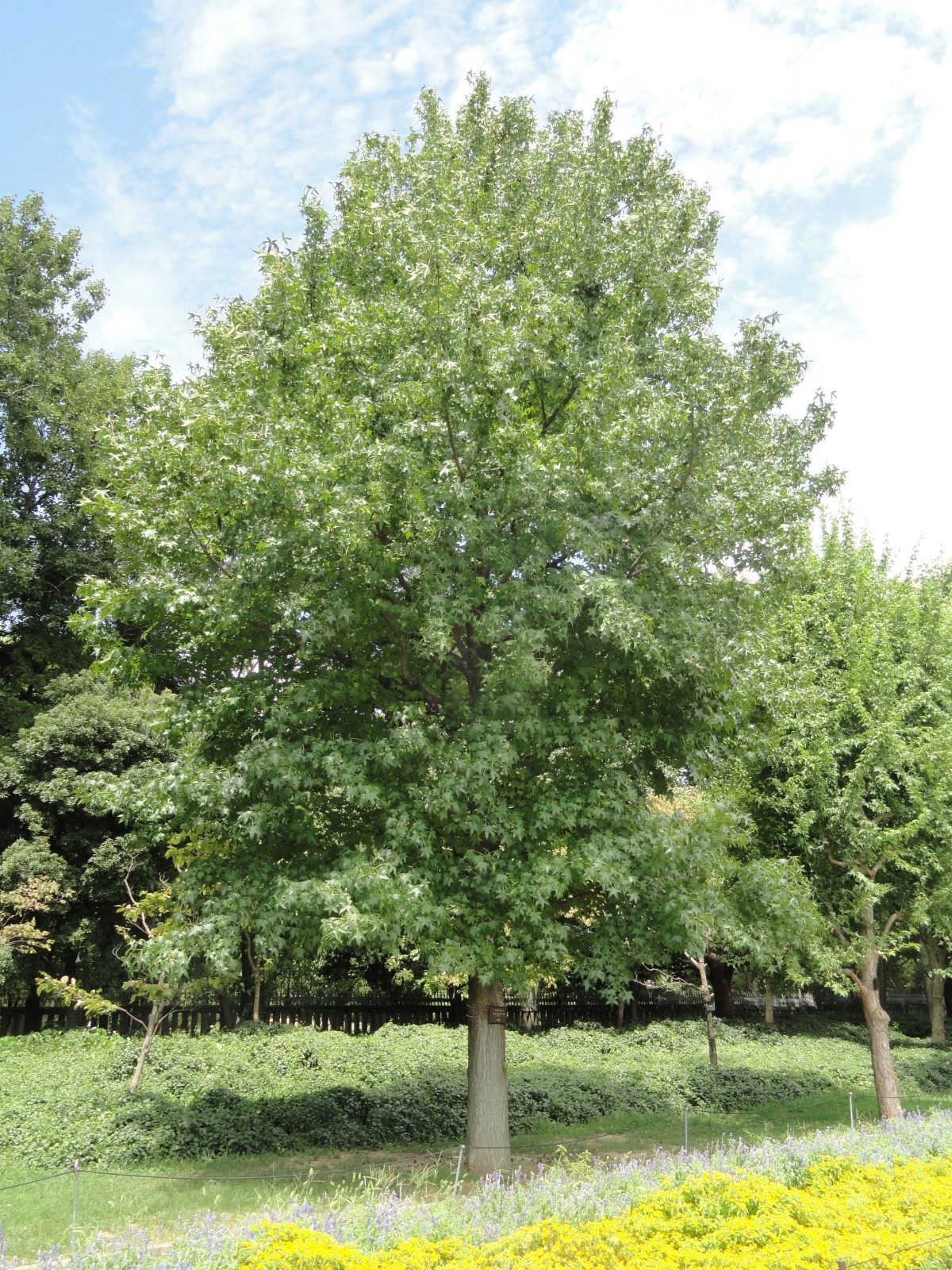
El sweetgum is a deciduous tree native to the southern United States, Mexico and Guatemala that reaches a height of 10 to 40 meters. The leaves are similar to those of the maples, that is, they are palm-lobed, green in spring and summer and yellow, reddish and finally burgundy in autumn. It blooms in spring, but its flowers lack ornamental value.
It grows in acidic soils, rich in organic matter. It requires frequent waterings. Otherwise, it resists cold and frost down to -18ºC.
Strawberry tree (Arbutus unedo)
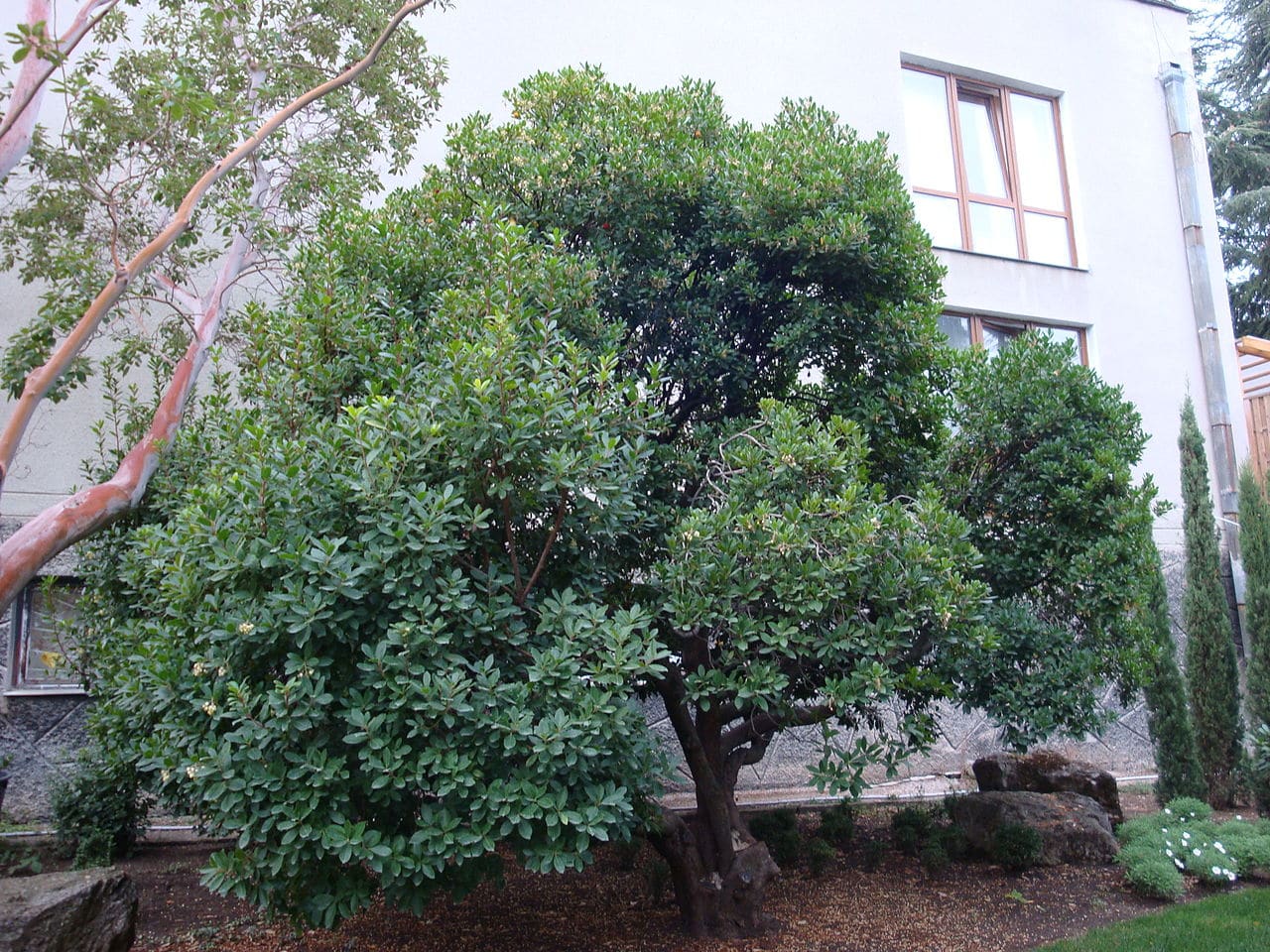
Image - Wikimedia / GPodkolzin
El arbutus It is an evergreen tree native to the Mediterranean region and the Atlantic coast that, normally, does not exceed 3 meters although can reach 10 meters in height. Its leaves are elliptical, glossy dark green, and it produces red and edible fruits in summer / autumn.
It grows in siliceous and limestone soils, loose, and well drained. It needs direct sun and moderate watering, but it supports drought. Resists up to -12ºC.
Fast-growing leafy trees
These trees that we show you below are those that grow more than 50 centimeters per year, as long as the appropriate conditions are met for this:
chorisia (Chorisia speciosa)
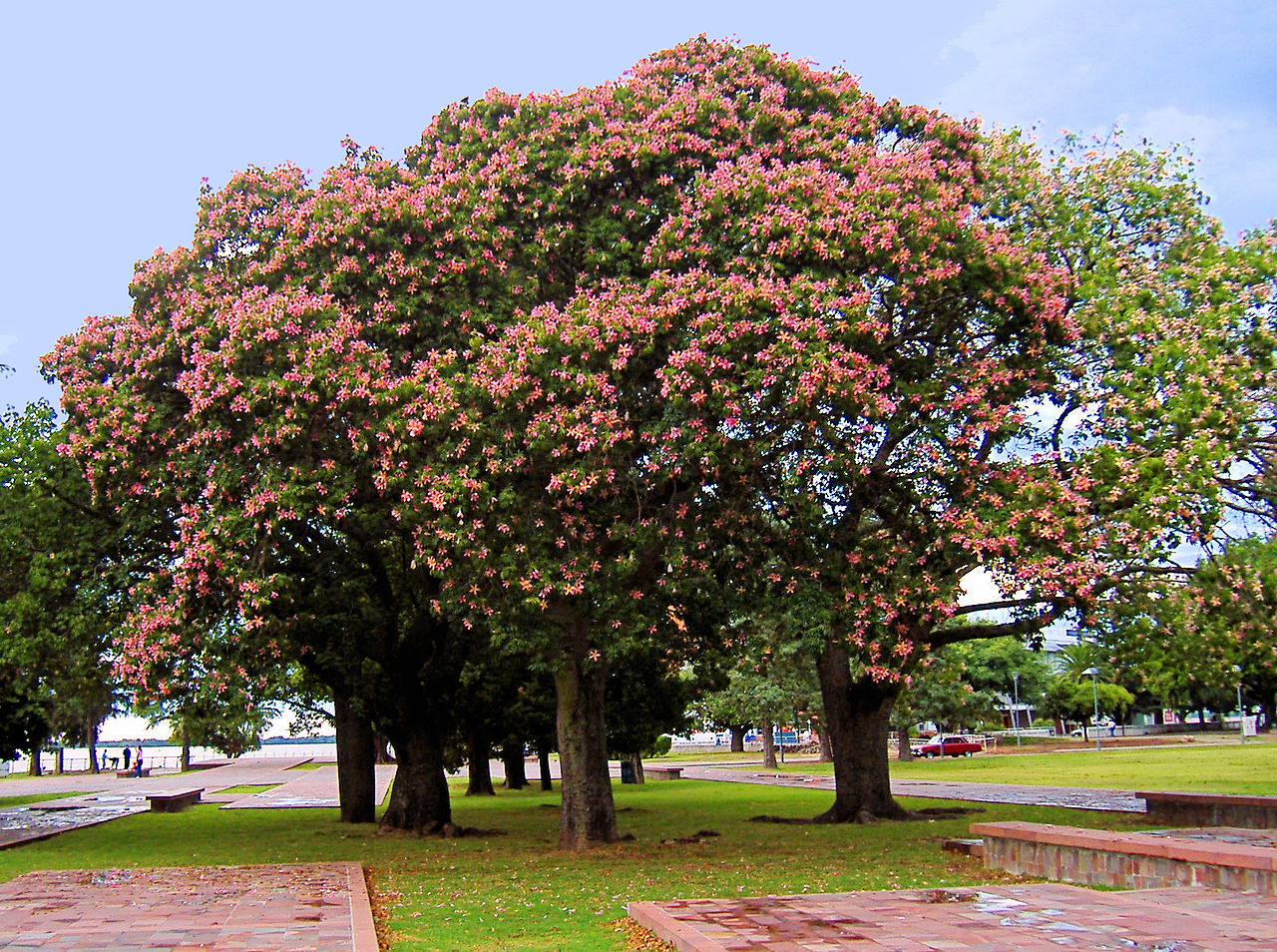
Image - Wikimedia / Nsaum75
La chorisia or rosewood is a deciduous tree native to Brazil, Northeast Argentina and Paraguay that reaches a height of 15-20 meters. Its leaves are palm compound, green and fall in the dry season (or in autumn / winter if it is in a temperate region). Produces flowers in late summer.
It grows in well-drained and fertile soils, in full sun. It resists drought and frost down to -12ºC.
False banana (Acer pseudoplatanus)
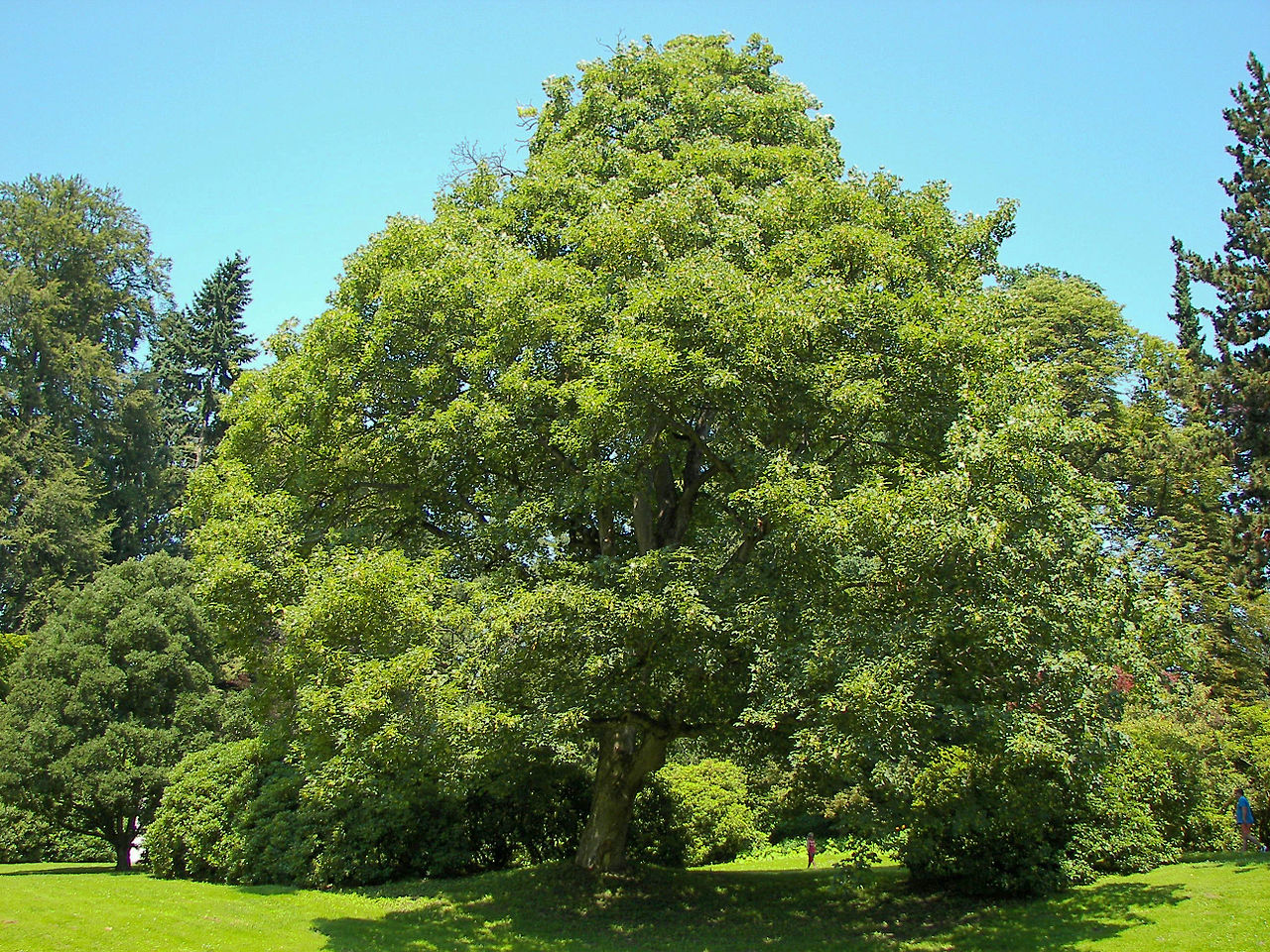
Image - Wikimedia / Willow
El fake banana is a deciduous tree native to southern and central Europe and up to western Asia that reaches a height of 25-30 meters. Its leaves are palmately lobed, with five lobes, green except in autumn that turn yellow before falling if frosts begin to occur in that season. It blooms in spring, but its flowers are not very showy.
It grows in all types of soils, but prefers those that are slightly acidic, and as long as they are rich in organic matter and it is placed in full sun. Resists up to -30ºC.
Paulownia (Pawlonia tomentosa)
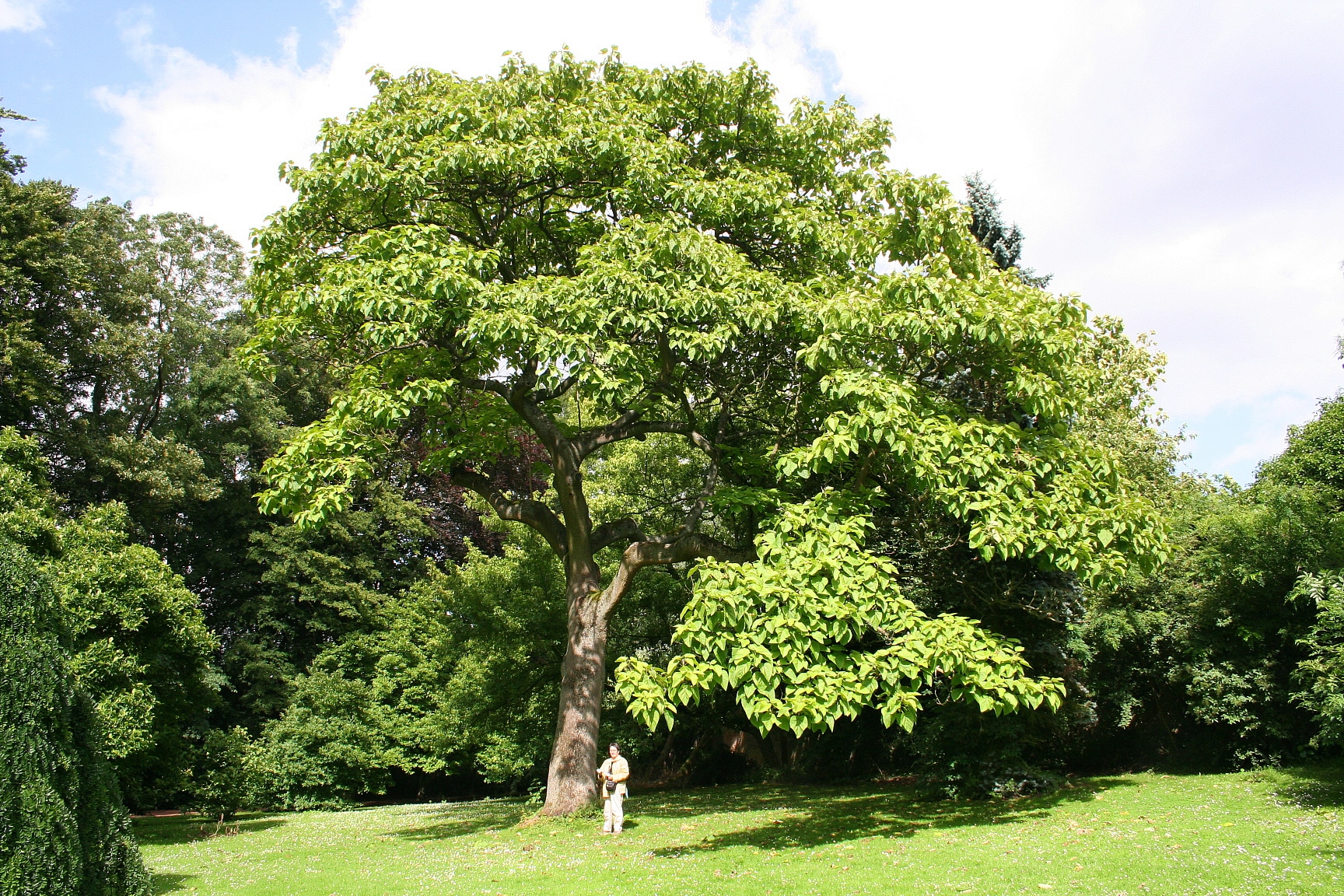
Image - Wikimedia / Jean-Pol GRANDMONT
La paulonia or kiri is a deciduous tree native to China and Japan that reaches a height of 10-15 meters. The leaves are ovate, up to 30 centimeters long, and green. In spring it produces flowers grouped in panicles and they are purplish.
It grows in fertile, well-drained soils. It requires moderate watering, very frequent in summer. Withstands frosts down to -12ºC.
We hope that what you have learned about leafy plants and their different habitats has been useful to you 🙂.